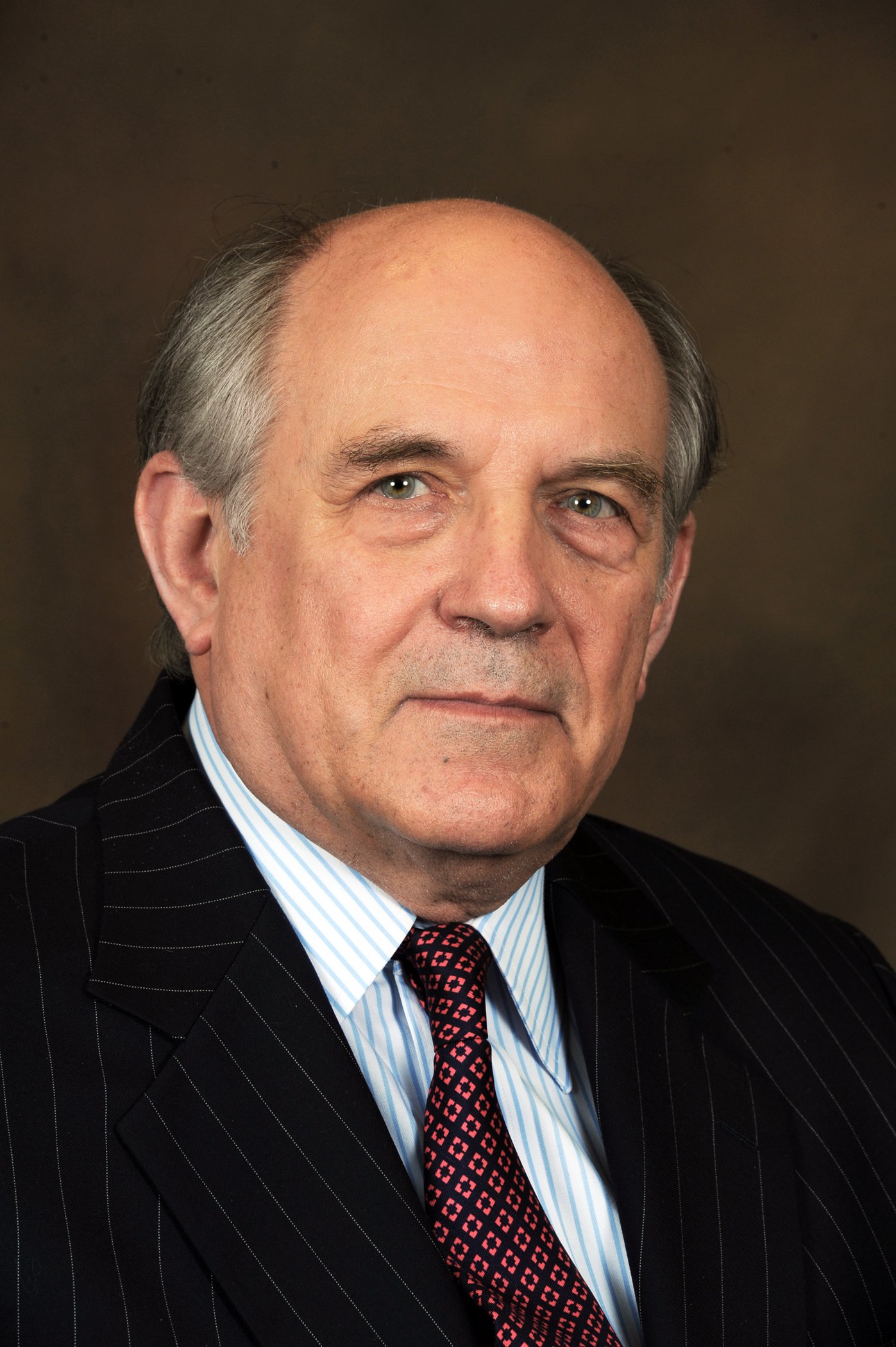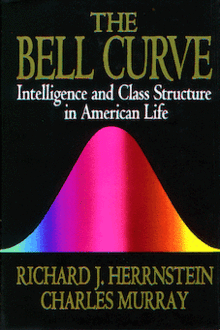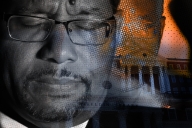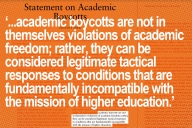You have /5 articles left.
Sign up for a free account or log in.
Most freshmen weren't born when The Bell Curve was published in 1994. But 22 years after the book was published (to widespread attention -- praise from some, but widespread criticism in academe), it is still dividing campuses.
 Charles Murray, one of the co-authors, is scheduled to speak next week at Virginia Polytechnic Institute and State University on topics related to more recent work. But his association with The Bell Curve led many minority students and faculty members to question the invitation. Some have urged that it be withdrawn.
Charles Murray, one of the co-authors, is scheduled to speak next week at Virginia Polytechnic Institute and State University on topics related to more recent work. But his association with The Bell Curve led many minority students and faculty members to question the invitation. Some have urged that it be withdrawn.
The president of Virginia Tech has declined to do so, citing principles of academic freedom. But the president, Tim Sands, also denounced The Bell Curve as a "largely discredited work linking measures of intelligence to heredity, and specifically to race and ethnicity -- a flawed socioeconomic theory that has been used by some to justify fascism, racism and eugenics."
So on Thursday, even though Sands defended Murray's right to appear on campus, Murray denounced Sands. "President Sands is unfamiliar either with the actual content of The Bell Curve -- the book I wrote with Richard J. Herrnstein to which he alludes -- or with the state of knowledge in psychometrics," Murray wrote in an open letter to Virginia Tech. (He did include a quick "Bravo" to Sands for not blocking his appearance on campus.)
 The Bell Curve argues that intelligence -- much but not all of it inherited genetically -- is the key way to predict one's success in life (or criminal behavior). By stating that inherited intelligence matters more than, for example, socioeconomic status, the book seemed to many to suggest that racial and ethnic groups that have not achieved the educational and economic success of others must simply not have the genes for it.
The Bell Curve argues that intelligence -- much but not all of it inherited genetically -- is the key way to predict one's success in life (or criminal behavior). By stating that inherited intelligence matters more than, for example, socioeconomic status, the book seemed to many to suggest that racial and ethnic groups that have not achieved the educational and economic success of others must simply not have the genes for it.
While Murray has repeatedly denied being racist, many saw the book as justifying all sorts of racial and ethnic inequality in the United States. Many said that the book suggested that some groups, and black people in particular, were not likely to be intelligent or successful. The book was the source of countless essays and counteressays and speeches.
At Virginia Tech, Murray's talk will be about capitalism. Murray is currently based at the American Enterprise Institute and much of his recent work has been about economics.
But as has been the case elsewhere, critics have cited The Bell Curve, not his planned subject, to question his appearance.
The faculty members in Virginia Tech's Africana Studies program issued a joint letter that registered "alarm" at the Murray talk, and questioning whether such an appearance is really about free exchange of ideas.
"It is crucial to reckon with the character of the voices offered under the umbrella of free engagement with ideas and issues," the letter said. "Murray is not simply a controversial figure, or a participant in contentious debates. He has engaged in a mission to use discredited pseudoscience to perpetuate the subordination of people of African descent, Latinos, Native American Indians, the poor, women and the disabled. His work is regarded as fringe pseudoscholarship by people who work in the fields in which he deigns to dabble, but exerts influence on segments of American society who see his voice as one capable of furthering the agenda of turning back the clock of progress."
The letter anticipated criticism that excluding Murray would undercut academic freedom, and said this on the subject: "We must strive to build a university that is inclusive, and the faculty of Africana Studies exists to move the university toward that goal. But doing so by including perspectives that visit depredation upon the climate of inclusivity is folly. Similarly, we are unswerving in our commitment to civility in dialogue.
"Yet, civility in the face of narratives that visit violence upon marginalized populations -- recalling the history of forced sterilization, unjust institutionalization and incarceration, and denial of basic human rights and dignity -- is contrary to the spirit of that ideal." (A key caveat is that while the letter implies that Murray shouldn't have been invited, it does not explicitly call, as others have, for him to be uninvited.)
Not everyone at Virginia Tech wants to keep Murray away. When the student newspaper wrote about the controversy, most of the comments defended the invitation.
Some are urging minority students to attend, wearing T-shirts that show their rejection of Murray's ideas, by stating, "I am not inferior."
In his letter on the controversy, Sands, the president, said that it was important to let the talk go on. "There is room in the intellectual life of the university for perspectives that sharpen our critical-thinking skills and evoke thought and discussion on topics such as ethics, morality, logic and the scientific method," he wrote, adding that "this will not be the last time that a student group, a faculty member or the administration invites a speaker whose views will be regarded by some in our community as repugnant, offensive or even fraudulent.
"The dichotomies of free speech vs. censorship and civil discourse vs. hostile discourse intersect but are not equivalent. While we cannot prevent others from finding their place on each of these axes, let us set an example for free speech and civil discourse."
In the response he published Tuesday, Murray disputed the idea that the basis of his book doesn't reflect consensus scholarship. "There’s no doubt that discussing intelligence and race was asking for trouble in 1994, as it still is in 2016. But that’s for political reasons, not scientific ones," he wrote. "Once again, the state of knowledge about the basics is not particularly controversial. The mean scores for all kinds of mental tests vary by ethnicity. No one familiar with the data disputes that most elemental statement."
It may be worth noting, however, that critics of the book are by no means limited to those at Virginia Tech and those who don't like Murray's politics. An article in Slate in 1997 reviewed all of the commentary on the book, finding a consensus that was highly critical.
"The Bell Curve is a relentless brief for the conservative position in psychometrics and social policy," says the piece, by Nicholas Lemann, now a journalism professor and dean emeritus at Columbia University. "For all its talk of reflecting a consensus, the sources it draws upon are heavily skewed to the right. Herrnstein and Murray used quasi-nutty studies that support their position (as Charles Lane demonstrated in The New York Review of Books), and ignore mainstream studies that contradict it (as Richard Nisbett showed in The New Republic). The data in The Bell Curve are consistently massaged to produce conservative conclusions; not once is a finding that contradicts the main thesis reported in the text."
Controversy over the book has lost Murray some speaking engagements. Azusa Pacific University in 2014 called off an appearance.
Via email, Murray said that he hasn't given a talk on The Bell Curve "in years" and that "today's undergraduates have rarely heard" of it. He said that when his appearances are well publicized, "I can count on the usual suspects showing up with the usual nonsense. The president of the university is not ordinarily among them, however."
Virginia Tech said that Sands was not planning to answer Murray's letter. "Virginia Tech is aware of Mr. Murray¹s letter and respects his right to express his opinion, just as President Sands has expressed his beliefs in his letter. No response is planned," said a statement from the university.








